Why is my Panasonic KX-TG6531 base unit not ringing?
- CChristopher KimSep 14, 2025
If the base unit of your Panasonic Cordless Telephone does not ring, check if the ringer volume is turned off and adjust it.
Why is my Panasonic KX-TG6531 base unit not ringing?
If the base unit of your Panasonic Cordless Telephone does not ring, check if the ringer volume is turned off and adjust it.
Why does the handset beep and/or flash on my Panasonic Cordless Telephone?
If the handset of your Panasonic Cordless Telephone beeps and/or flashes, fully charge the batteries.
Why does my Panasonic KX-TG6531 beep and flash?
If your Panasonic Cordless Telephone handset beeps and/or the phone icon flashes, it indicates that the battery charge is low. You should fully charge the batteries.
How to fix no dial tone on Panasonic KX-TG6531 Cordless Telephone?
If you cannot hear a dial tone on your Panasonic Cordless Telephone, ensure the base unit’s AC adaptor or telephone line cord is properly connected. If the connections are correct, disconnect the base unit from the telephone line and connect the line to a known working telephone. If the working telephone operates properly, contact our service personnel to have the unit repaired. If the working telephone does not operate properly, contact your service provider/ telephone company.
Why can't I make long distance calls on my Panasonic KX-TG6531?
If you cannot make long distance calls on your Panasonic Cordless Telephone, make sure that you have long distance service.
What to do if my Panasonic KX-TG6531 got wet?
If liquid or other moisture has entered your Panasonic Cordless Telephone handset/base unit, disconnect the AC adaptor and telephone line cord from the base unit. Remove the batteries from the handset and leave to dry for at least 3 days. After drying, reconnect the AC adaptor and telephone line cord, insert the batteries, and charge fully before use. If it still doesn't work, contact an authorized service center.
What to do if my Panasonic Cordless Telephone displays only an underscore?
If your Panasonic Cordless Telephone displays only an underscore '_', it could mean the handset is too far from the base unit, so move closer. Another reason might be that the base unit's AC adaptor isn't properly connected; try reconnecting it. Also, ensure the handset is registered to the base unit.
Why is my Panasonic Cordless Telephone not recording messages?
If your Panasonic Cordless Telephone does not record new messages, first check if the answering system is turned off and turn it on. If the message memory is full, erase unnecessary messages. Also, verify that the recording time isn't set to “Greeting only”, and change the setting if it is. If you subscribe to a voice mail service, messages are recorded by your service provider, so you may need to adjust the number of rings or contact your service provider.
What to do if I cannot operate the answering system remotely on my Panasonic KX-TG6531 Cordless Telephone?
If you cannot operate the answering system remotely on your Panasonic Cordless Telephone, the remote access code may not be set, so set the remote access code. You might be entering the wrong remote access code; if you have forgotten it, enter the remote access code setting to check your current code. Ensure you press each key firmly. Also, the answering system may be turned off, so turn it on.
Why is caller information not displayed on my Panasonic Cordless Telephone?
Several factors can cause caller information not to be displayed. First, ensure you subscribe to Caller ID service. If your unit connects to additional telephone equipment such as a Caller ID box or cordless telephone line jack, plug the unit directly into the wall jack. If you use a DSL/ADSL service, consider connecting a DSL/ADSL filter between the base unit and the telephone line jack. Also, the name display service may not be available in some areas, or other telephone equipment may be interfering with this unit, so disconnect the other equipment and try again.
Details the different series and their model numbers.
Compares features across different Panasonic phone series.
Details supplied and replacement accessories for the unit.
Information on expanding the phone system with optional handsets and range extenders.
Crucial safety precautions to prevent injury and ensure proper product operation.
Guidelines for safe operation, including cleaning and avoiding disassembly.
Guidance for users with medical devices like pacemakers.
Recommendations for safe and effective installation and placement of the unit.
Details on battery usage, handling, charging, and disposal recommendations.
Tips for optimal base unit placement and environmental considerations for best performance.
Instructions for basic cleaning and maintenance of the product.
Includes notices on product disposal, transfer, and privacy of information.
Technical details including standard, frequency range, power consumption, and operating conditions.
Step-by-step guide for connecting the base unit, installing batteries, and charging.
Important notes regarding connections, power failures, battery installation, and charging.
Explanation of battery level indicators and Panasonic Ni-MH battery performance.
Details on the power-saving eco mode feature and its display indicator.
Identification and description of handset and base unit controls and buttons.
Instructions on how to attach and remove the belt clip.
Explanation of handset display items and their meanings.
Guide to setting the display language and voice guidance language.
How to change the dialing mode between Tone and Pulse for different services.
Procedure for setting the current date and time on the unit.
Instructions for making calls using the handset, speakerphone, and redial list.
How to adjust audio volume during a call.
How to redial numbers from the stored list.
Steps for answering incoming calls using the handset or base unit.
Information on the Auto Talk feature for answering calls by lifting the handset.
How to adjust the ringer volume for incoming calls on the handset.
How to temporarily silence the handset ringer during an incoming call.
How to adjust the ringer volume for the base unit.
Explains features like Hold, Mute, and Flash during a call.
How to use Call Waiting and Caller ID with call waiting features.
How to temporarily switch to tone dialing for specific services.
Feature to improve sound clarity in areas with potential interference.
How to join an existing outside call.
Setting to prevent others from joining conversations.
Steps to add new names and phone numbers to the shared phonebook.
Reference for entering characters using the dial keys.
Information on assigning entries to groups for easier phonebook management.
How to edit or erase characters and numbers when entering data.
Procedure to customize the names of phonebook groups.
Methods to locate and dial entries from the phonebook.
How to search the phonebook by assigned groups.
Process to modify existing phonebook entries.
Steps to remove single or all entries from the phonebook.
Feature to dial numbers stored in the phonebook while on an outside call.
Overview of features that can be customized using the handset menus.
Method for programming settings using specific codes and key presses.
How to set a daily or one-time alarm on the handset.
Setting a period when the handset will not ring for outside calls.
How to define the start and end times for silent mode.
Procedure to assign a custom name to each handset.
Feature to reject calls from specific numbers or unidentified callers.
How to reject calls with no phone number displayed.
Managing numbers stored in the call block list.
Information on expanding the system with additional handsets.
Steps to pair a new or existing handset with the base unit.
Procedure to remove a handset's registration from the base unit.
Overview of how Caller ID information is displayed and handled.
How caller information matching phonebook entries is displayed.
Feature that announces the caller's name or number.
How the phonebook name associated with a caller is announced.
Assigning different ring tones to groups of callers.
Accessing and viewing the history of incoming calls.
Modifying phone numbers in the caller list for easier callback.
Automatically formats caller numbers based on past edits.
Removing specific entries from the caller list.
Clearing the entire caller list.
Saving caller list entries into the phonebook.
How the answering system works to record calls and play greetings.
Procedures for activating and deactivating the answering system.
How to listen to callers leaving messages.
Information on using your own or pre-recorded greeting messages.
How to revert to a pre-recorded greeting after recording your own.
Steps to listen to the currently set greeting message.
How to play back recorded messages using the base unit.
Controls for playback, repeat, skip, and stop during message playback.
Procedure to delete all recorded messages.
How to access and listen to messages using the handset.
Function to record short voice messages for other users.
How to access answering system functions remotely via phone.
Step-by-step guide for operating the system from an external phone.
Explanation of the voice prompts used during remote operation.
Key commands to control the answering system remotely.
Options to customize the answering system, like ring count and recording time.
How to save your voicemail service access number for automatic dialing.
Explanation of tone detection for new voicemail messages.
How to enable or disable the voicemail tone detection feature.
Steps to access and listen to voicemail messages.
How to make and receive intercom calls between handsets or base unit.
Step-by-step instructions for initiating an intercom call.
How to respond to an intercom page.
Function to find a misplaced handset by paging it.
Procedures for transferring outside calls and setting up conference calls.
How to answer a call transferred from another unit.
Instructions for mounting the base unit on a wall or setting it on a desk.
A guide to common display messages and their solutions.
Solutions for common problems encountered with the phone system.
What to do if the handset beeps, flashes, or has reduced operating time.
Troubleshooting common issues during calls or intercom use.
Solutions for problems related to Caller ID and Talking Caller ID features.
How to address time discrepancies due to Caller ID data.
Troubleshooting issues with displaying second caller information.
Solutions when the answering system fails to record messages.
Troubleshooting steps for issues with the answering system's operation.
Solutions for problems encountered when operating the system remotely.
What to do if the unit is exposed to liquid or moisture.
Regulatory compliance information and FCC guidelines.
Safety warnings related to RF exposure and proper usage.
Important notices regarding FCC ID and TIA-1083 compliance.
Information on compatibility with hearing aids.
Simplified installation steps for the base unit, handset, and charger in Spanish.
Operation tips, including function keys and navigator key usage in Spanish.
How to change the display language for the handset in Spanish.
Steps to set the date and time for the handset in Spanish.
Basic call operations like making, answering, and adjusting volume in Spanish.
Common questions and their solutions related to the phone's operation in Spanish.
Contact information for product support, parts, and accessories in the US and Puerto Rico.
How to purchase accessories and instruction books online or via phone.
Details of the limited warranty coverage, terms, and conditions for the product.
Specific limitations and exclusions that apply to the product's limited warranty.
| Type | Cordless Telephone |
|---|---|
| Frequency | 1.9 GHz |
| Number of Handsets | 1 |
| Answering System | Yes |
| Answering System Recording Time | 18 minutes |
| Caller ID | Yes |
| Call Waiting | Yes |
| Speakerphone | Yes |
| Keypad | Yes |
| Phonebook Memory | 100 names and numbers |
| Ringer Volume Control | Yes |
| Headset Jack | Yes |
| Talk Time | Up to 10 hours |
| Intercom | Yes |
| Redial | Yes |
| Power Source | AC Adapter |
| Expandable Handsets | Yes |
| Display | LCD |
| Battery Type | Ni-MH |
| Standby Time | Up to 5 days |
| Range | Up to 1000 feet |

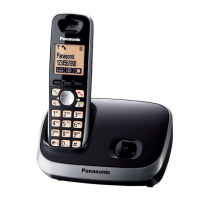






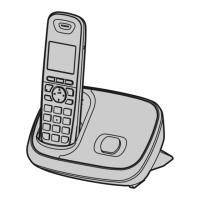
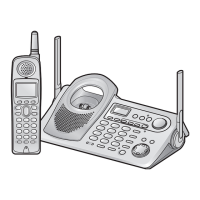
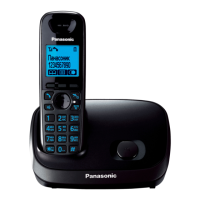
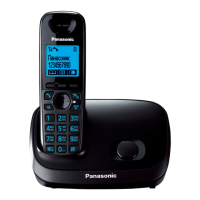
